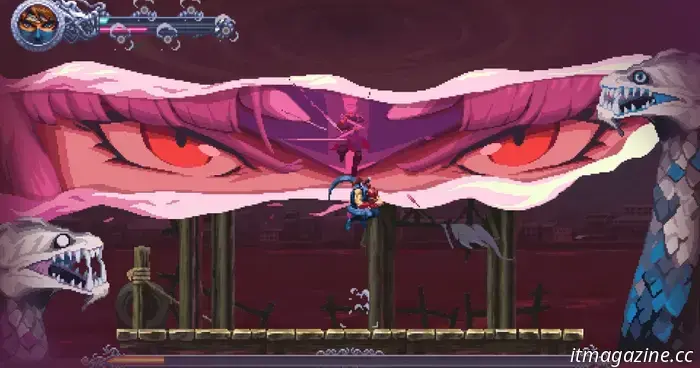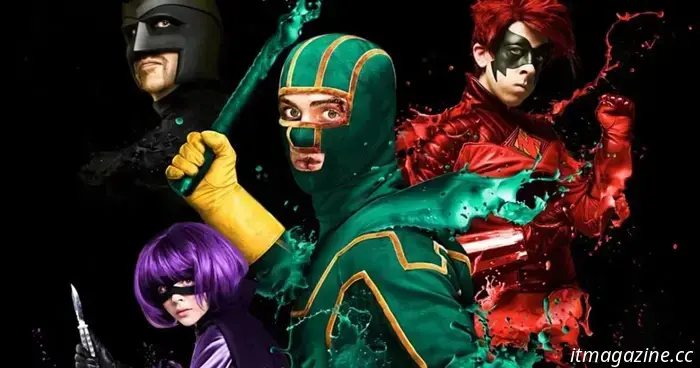
Ninja Gaiden: Ragebound serves as a strong reminder that 2D games continue to dominate.
Ninja Gaiden is making a strong comeback. Recently, Koei Tecmo unexpectedly launched Ninja Gaiden 2 Black, an Unreal Engine 5 remake of the Xbox 360 classic. Later this year, the franchise will introduce Ninja Gaiden 4, marking the first original entry in the series in over ten years. This would be a busy year for any franchise, especially one that has been dormant for a while, but it’s not stopping there. Additionally, this year will see the release of Ninja Gaiden: Ragebound, a 2D reinterpretation of the series from the retro specialists at Dotemu and The Game Kitchen.
The series is an excellent candidate for this kind of revival. After all, Ninja Gaiden originated in arcades and on the NES as a classic beat-em-up. Can this formula still appeal to contemporary audiences who primarily recognize the series for its iconic 3D versions that defined the Xbox 360 era? Based on my initial hands-on experience, which guided me through several levels of Ragebound for about an hour, Dotemu appears to be crafting a well-executed retro revival that doesn’t merely aim to exploit nostalgia. It's a return to a beloved genre that didn’t need fixing.
2D action is dominant
Ninja Gaiden: Ragebound is set around the timeline of the series' NES installment. While Ryu embarks on a quest for revenge in America, Kenji sets off on his own mission back home. I couldn’t grasp the full story during my demo, but it seems Dotemu is keeping it straightforward. There are crystals to collect, and Kenji is tasked with that.
Within moments, Ragebound’s vision becomes clear to me. I’m thrown into a brief introductory stage where I run right and slash my sword as ninjas and monsters close in. If you’ve played classic side scrollers like the Sega Genesis’ Castlevania: Bloodlines, you’ll feel at home. I can only attack directly ahead, block projectiles with my sword, and navigate some light platforming involving wall jumps and hanging from ceilings. It embodies the essence of a game that feels familiar to how older games were perceived.
However, that initial simplicity is somewhat misleading. Once I grasp those basics, I’m led into a real tutorial that reveals more intricacies. In terms of movement, I have a hover jump that allows me to bounce off projectiles and a roll to dodge. For offense, I can execute a forward dash strike by pressing the attack and right bumper simultaneously. The first hint of a gameplay twist appears when I discover charged attacks. Hitting an enemy with a blue aura enhances my next attack, letting me slice through larger foes in a single hit. If a glowing enemy isn't nearby, I can hold the attack button and sacrifice a bit of my health to achieve the same effect. This introduces a layer of resource management, adding a risk-reward dynamic.
I quickly adapt to that as I progress through stages designed to reward that system. Strong enemies are strategically placed near those with glowing auras, enabling me to activate and test that power fluidly. Collectibles are positioned throughout the stages, requiring me to use my hover jump to bypass pots spewing molten projectiles. Just when I think I've mastered it all, Dotemu throws another twist my way.
In the main game, players control two characters simultaneously: Kenji and Kuromi. The latter expands my move set, allowing me to press B to throw a projectile forward or Y to send another upwards. Using these projectiles consumes pink energy, which can be regained by defeating enemies. This twist makes Ragebound a more intricate platformer than it initially appears in its straightforward levels. The enemies that enhance my attacks will change color between pink and blue, necessitating that I hit them with the correct attack to gain the buff. This adds a matching puzzle element to the combat, rewarding me for utilizing all my attacks rather than just relying on one.
Dotemu
Before long, I’m leveraging Kuromi’s abilities to navigate timed traversal challenges that require me to use projectiles to teleport over spikes. In a seaside level, I must traverse water gaps by bouncing off fish using Kenji’s hover slash. There’s some depth to the gameplay, but it remains connected to the games that came before it. It feels like a natural evolution of the 2D format we could have seen in the 90s.
Naturally, no retro side scroller is complete without boss fights that demand mastery of various systems. The most impressive encounter I experienced involved battling two sea serpents that emerged on either side of a rickety wooden platform. I had to strike one of them while dodging its projectiles, occasionally jumping to a higher platform to evade a stream of fire. A telegraphed slam attack marks it with a blue aura, allowing me to unleash a charge attack and briefly stun one of the serpents. It’s a thrilling 2

Other articles
 Trump's tariffs revive Europe's drive for cloud sovereignty.
According to Mark Boost from CIVO, Trump's tariffs have "solidified the notion" that Europe cannot depend on the United States for its digital infrastructure.
Trump's tariffs revive Europe's drive for cloud sovereignty.
According to Mark Boost from CIVO, Trump's tariffs have "solidified the notion" that Europe cannot depend on the United States for its digital infrastructure.
 Patreon's proposed new offerings might position it as a genuine competitor to Twitch.
Patreon is set to introduce a new service named Live Video, which will provide creators with new opportunities.
Patreon's proposed new offerings might position it as a genuine competitor to Twitch.
Patreon is set to introduce a new service named Live Video, which will provide creators with new opportunities.
 Fifteen years on, this rebellious superhero film continues to impress.
Fifteen years ago, Matthew Vaughn transformed the superhero genre with Kick-Ass, a provocative adaptation of the comic of the same name that truly embodied its title.
Fifteen years on, this rebellious superhero film continues to impress.
Fifteen years ago, Matthew Vaughn transformed the superhero genre with Kick-Ass, a provocative adaptation of the comic of the same name that truly embodied its title.
 Amazon has discontinued the Citadel spinoffs Honey Bunny and Diana; season 2 is now set for 2026.
Citadel: Honey Bunny and Citadel: Diana will not be renewed for second seasons on Prime Video. Instead, Amazon will concentrate on completing Citadel season 2.
Amazon has discontinued the Citadel spinoffs Honey Bunny and Diana; season 2 is now set for 2026.
Citadel: Honey Bunny and Citadel: Diana will not be renewed for second seasons on Prime Video. Instead, Amazon will concentrate on completing Citadel season 2.
 Lenovo's alternative to the Surface Pro is currently discounted by over $1,000.
The Lenovo ThinkPad X12 Gen 2 Detachable is a 2-in-1 laptop that serves as an alternative to Microsoft’s Surface Pro models. It is currently available with a 45% discount.
Lenovo's alternative to the Surface Pro is currently discounted by over $1,000.
The Lenovo ThinkPad X12 Gen 2 Detachable is a 2-in-1 laptop that serves as an alternative to Microsoft’s Surface Pro models. It is currently available with a 45% discount.
 Samsung Galaxy S25 users receive surprise new features in the latest update.
The recent update for the Samsung Galaxy S25 introduces a media widget, improves animations, and enhances overall performance.
Samsung Galaxy S25 users receive surprise new features in the latest update.
The recent update for the Samsung Galaxy S25 introduces a media widget, improves animations, and enhances overall performance.
Ninja Gaiden: Ragebound serves as a strong reminder that 2D games continue to dominate.
Ninja Gaiden: Ragebound is a intense return to retro gaming, featuring a few refreshing elements.
